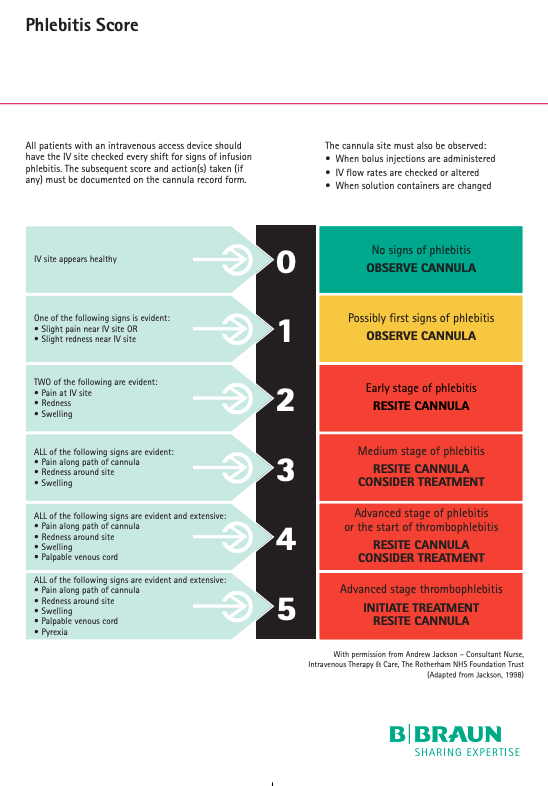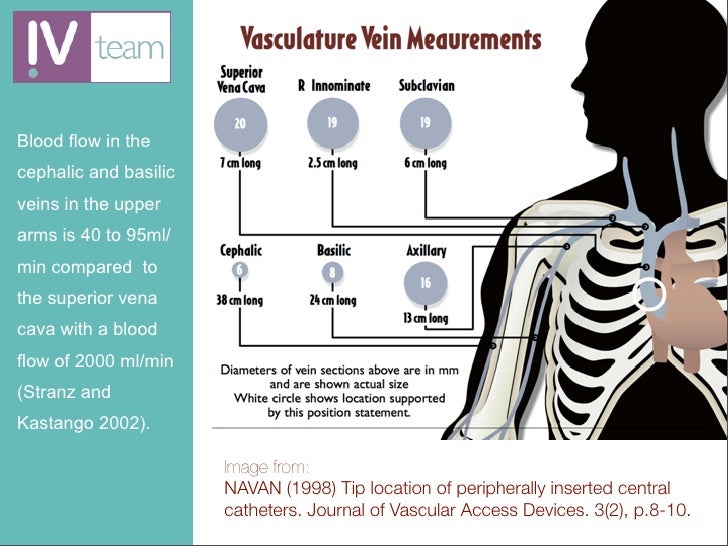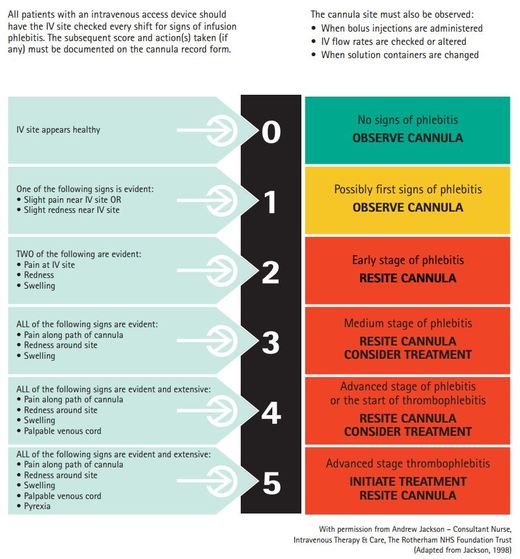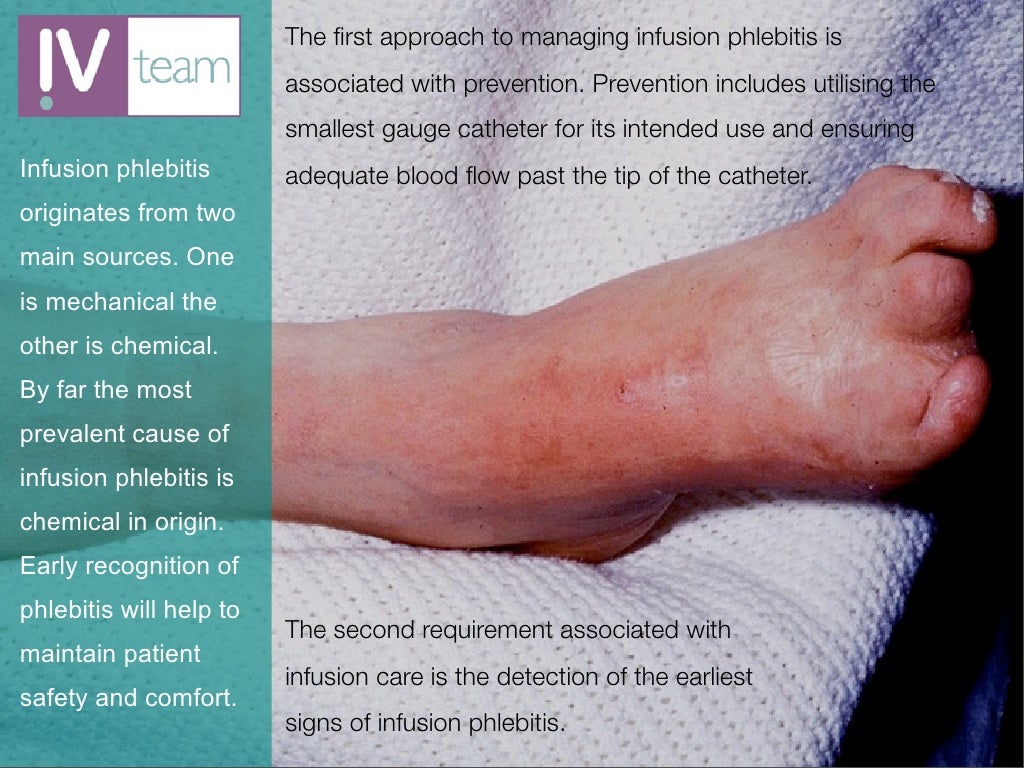
VIP Score IVTEAM Citation Library
Visual Infusion Phlebitis (VIP) Scale Score Observation 0 IV site appears healthy 1 One of the following is evident: • Slight pain near IV site • Slight redness near IV site 2 Two of the following are evident: • Pain at IV site • Erythema • Swelling 3 All of the follwoing signs are evident: • Pain along path of cannula • Erythema

VISUAL INFUSION PHLEBITIS (VIP) SCORE PERIPHERAL I.V. CANNULA YouTube
The introduction of the visual infusion phlebitis (VIP) score tool for assessment of early signs of phlebitis,and prompt removal of peripheral intravenous cannulas, has been very successful in reducing the incidence below the acceptable rate of 5%.

Introduction to the Visual Infusion Phlebitis (VIP) score
However, achieving this goal depends on strict compliance with guidelines for cannula insertion, documentation, and assessment using the VIP tool. This study aimed to increase the use of VIP scoring tool to 100% on an oncology ward during a four to six month period in order to maximise its utility in phlebitis prevention.

IV Site Assessment Peripheral Intravenous Access
RESITE CANNULA and CONSIDER TREATMENT. All of the following are evident and extensive: Pain along the path of cannula. Erythema. Induration. Palpable venous cord. 4. Advanced stage of phlebitis or start of thrombophlebitis. RESITE CANNULA and CONDSIDER TREATMENT.

Introduction to the Visual Infusion Phlebitis (VIP) score
VIP Score The Visual Infusion Phlebitis score is a very popular tool for monitoring infusion sites. In 2006 Paulette Gallant and Alyce Schultz completed an evaluation of the VIP score as a tool that determines the appropriate discontinuation of peripheral intravenous catheters.

Stop Routine Cannula Replacement PatientSafe Network
catheter trajectory. The VIP score is widely accepted as a tool of choice for monitoring of PVC sites.6 The VIP score provides the practitioner with a tool that can describe the condition of the site. It also promotes an action related to the result of the observation such as cannula removal. The VIP score helps for the assessment and.

Introduction to the Visual Infusion Phlebitis (VIP) score
TABLE 1: V.I.P. SCORE (VISUAL INFUSION PHLEBITIS SCORE) V.I.P SCORE IV site appears 0healthy No signs of phlebitis OBSERVE CANNULA ONE of the following is evident: Slight pain near I.V. site or slight redness near I.V site 1 Possible first signs of phlebitis OBSERVE CANNULA TWO of the following is evident: EarlyPain near I.V site

Peripheral Venous Cannula (PVC, Insertion and Management
IV flush and VIP score Assessment in OSCE Skills Station. This skill station can be divided into three phases which are the following, Introduction Phase. Check the area for safety. Connect the prefilled syringe to the port using aseptic non touch technique and flush cannula using a pulsing action. Ensure that the patient is not experiencing.

Introduction to the Visual Infusion Phlebitis (VIP) score
Phlebitis is a common and painful complication of peripheral intravenous cannulation. The aim of this review was to identify the measures used in infusion phlebitis assessment and evaluate evidence regarding their reliability, validity, responsiveness and feasibility. Method

3M Tegaderm I.V.
Visual infusion phlebitis (VIP) score tool for the assessment of the early signs of phlebitis along with prompt removal of peripheral intravenous cannula has been very successful in reducing below.

Infusion Phlebitis / Cannula Infection Grade / VIP Score/Resite Cannula / Only For Medical
The cannula should be secured using a clean securing transparent dressing. Non sterile tape should not cover the insertion site. The insertion site should remain visible through the dressing. The securement of the device is essential to reduce the risk of dislodgement and other complications.

Introduction to the Visual Infusion Phlebitis (VIP) score
the PVL site. If the score is '0' then the PVL is safe to use. If the score is one, the PVL may be used with caution, and careful monitoring. If the score is 2 or above the PVL must be removed, and appropriate action taken. If there is a continuous infusion of fluid or medication running via a cannula every hour staff must assess VIP score.

Visual Infusion Phlebitis (VIP) Scale Download Table
Evidence of a written protocol to ensure that people who need a vascular access device have their risk of infection minimised by the completion of specified procedures necessary for the safe insertion and maintenance of the device and its removal as soon as it is no longer needed.

NPDMOST Observation and scoring tools NEWS2, MEWS, ACVPU and VIP Visual Infusion Phlebitis
The insertion of a peripheral intravenous cannula (PIVC) for intravenous. Phlebitis was considered present if the VIP score was ≥2, with associated recommendation for PIVC removal. Despite modifying the scale, the authors continued to use the label of VIP scale. Therefore, several versions of the VIP scale, including Jackson's original.

VIP ( VISUAL INFUSION PHLEBITIS ) SCORE. YouTube
The VIP score is a standardized and internationally accepted assessment tool for phlebitis (Infusion Nurses Society. PIVCs respectively. A semi-permeable transparent or sterile dressing was applied following the majority (99.8%) of cannula insertions. 4.2 PIVC maintenance, removal and complications. The mean dwell time for all PIVCs was 1.9.

VIP Score Intravenous Therapy Health Care
this video explains about the vip scoring.it is a scale used to assess the iv site in a patient.the score ranges from 0-5.this scale helps to identify early.